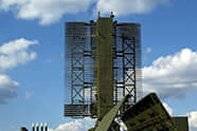QT Application Development for Embedded Systems
In today’s rapidly evolving technological landscape, the ability to develop applications that function seamlessly across multiple platforms is crucial. QT, a powerful and versatile framework, has emerged as a leading solution for creating cross-platform applications. Whether you’re developing for desktop, mobile, or embedded systems, QT provides the tools and flexibility to bring your ideas to life. This article delves into the features, advantages, and practical applications of QT, offering insights into why it has become a go-to choice for developers worldwide. The article also details Qt Application Development and Qt framework for Embedded Systems and the advantages of using it in various applications.
What is Qt ?
 QT is a software programs developed using the QT framework, a versatile, cross-platform toolkit designed for building high-performance applications. Originally developed for desktop applications, Qt has grown to become a popular choice in embedded electronics, thanks to its ability to run on various hardware platforms, including microcontrollers, mobile devices, and embedded computers. The core strength of Qt development lies in its ability to create both GUI-based and non-GUI applications.
QT is a software programs developed using the QT framework, a versatile, cross-platform toolkit designed for building high-performance applications. Originally developed for desktop applications, Qt has grown to become a popular choice in embedded electronics, thanks to its ability to run on various hardware platforms, including microcontrollers, mobile devices, and embedded computers. The core strength of Qt development lies in its ability to create both GUI-based and non-GUI applications.
For GUI development, Qt framework offers an extensive library of widgets and tools that enable developers to design sleek, modern user interfaces. On the backend, it provides support for event-driven programming, making QT application ideal for real-time applications in embedded systems. QT applications are widely used across industries, from automotive and medical devices to consumer electronics and industrial automation, where the need for robust, scalable, and responsive interfaces is paramount. The Qt application framework includes collaborative tools like Qt Creator, Qt Quick, and Qt Design Studio, enabling rapid development of future-ready projects with fewer feedback loops and more efficient iterations. Qt also offers a specialized language for user interface-centric applications called Qt Modeling Language (QML). QML can be combined with other programming languages such as Java, Python, Go, PHP, Ruby, and more, making it versatile for UI development across multiple platforms.
Key Features of Qt
Cross-Platform Compatibility: One of Qt’s most significant strengths is its ability to target multiple platforms with a single codebase. This eliminates the need for developers to write and maintain separate code for each platform, saving time and effort.
 Rich GUI Toolkit: QT comes with a comprehensive set of widgets and UI components that allow developers to create visually appealing and highly interactive user interfaces. The framework supports both native-looking UIs and custom designs, offering flexibility in how your application looks and feels.
Rich GUI Toolkit: QT comes with a comprehensive set of widgets and UI components that allow developers to create visually appealing and highly interactive user interfaces. The framework supports both native-looking UIs and custom designs, offering flexibility in how your application looks and feels.
Robust Performance: Built on C++, QT applications are known for their high performance and efficiency. This makes QT an ideal choice for resource-intensive applications, such as those requiring real-time processing or handling large datasets.
Modular Architecture: Qt’s modular design allows developers to pick and choose the components they need for their projects. This modularity makes it easier to scale applications, add new features, or customize functionality.
Comprehensive Documentation and Support: QT framework provides extensive documentation, tutorials, and community support, making it accessible for developers at all levels. Whether you’re a seasoned professional or a beginner, the resources available can help you get up to speed quickly.
Open Source and Commercial Licensing: QT framework is available under both open-source and commercial licenses, providing flexibility depending on your project’s needs. The open-source version is ideal for hobbyists and small projects, while the commercial license offers additional support and tools for enterprise-level applications.
QT Application Development in Embedded Electronics
QT is widely used in embedded electronics due to its flexibility, efficiency, and comprehensive tools for building complex graphical user interfaces (GUIs) and backend logic. Here are some key use cases and applications of QT in embedded systems:
Human-Machine Interfaces (HMIs): QT is widely used in the development of HMI applications for embedded systems. Its flexibility in GUI development allows designers to create interactive and user-friendly interfaces for medical devices, automotive infotainment systems, and industrial machines.
Real-Time Monitoring Systems: QT application development enable real-time monitoring and data visualization for embedded devices in mission-critical environments, such as aerospace, defense, and healthcare. QT-powered GUIs offer clear, intuitive data display from embedded sensors and systems.
IoT Device Management: QT provides a robust framework for developing IoT applications, making it easy to integrate embedded systems with cloud-based services. QT is ideal for building user interfaces for IoT dashboards and remote device monitoring applications.
Cross-Platform Development: Qt’s ability to support cross-platform development ensures code can be reused across various hardware architectures, from microcontrollers to embedded computers, streamlining the development process for embedded electronics.
Multimedia and Graphics Applications: Qt’s advanced multimedia and graphic features are utilized in embedded systems that require high-quality media handling, such as automotive displays, consumer electronics, and entertainment systems. Its powerful GUI development tools make creating visually appealing interfaces simple.
Automation and Control Systems: Qt applications are extensively used in automation and control systems within industrial environments. Its real-time communication and control features make it perfect for embedded control systems in robotics, factory automation, and other industrial systems.
Advantages of Using QT
There are several compelling reasons to choose Qt for GUI development. Among them is its support for a variety of programming languages, including C++ and a specialized UI language. However, it’s important to assess your business and technical requirements to ensure Qt is the right fit for your needs. Here are some of the most notable advantages of using Qt applications:
Cross-Platform Compatibility
Qt allows you to develop software that runs across multiple desktop and mobile environments, supporting major operating systems like Linux, Windows, iOS, and Android. This cross-platform capability eliminates the need to create separate native applications for each OS, saving time and resources while broadening your reach to a larger audience.
Open-Source
Qt is available under both commercial and open-source licenses, giving you the flexibility to choose the option that best suits your development needs. As an open-source framework, it encourages knowledge sharing among developers and promotes the expansion of Qt expertise. A free license covers basic use, while more advanced functionalities are accessible through a commercial license.
Built on C++
Qt is built on C++, making it ideal for creating everything from simple GUIs to complex embedded systems. It also provides wrappers for other programming languages like Python, Java, Ruby, PHP, and Go, allowing for versatile application development.
Proven and Time-Tested Technology
Qt has a nearly 30-year history of continuous improvement, with contributions from thousands of experts. Today, it offers an extensive range of features and functionalities, making it a reliable and mature framework for a wide variety of applications.
Comprehensive Toolset
Qt comes with a rich set of tools such as QML, QtGui, Qt Widgets, and QtUiTools, empowering developers to design intuitive and adaptive UIs. These tools allow for the creation of user interfaces that work seamlessly across different operating systems.
Conclusion
QT has emerged as a game-changing framework for developing applications in the embedded electronics industry. Its combination of powerful GUI development tools, cross-platform compatibility, and real-time performance makes it the go-to choice for creating everything from HMI systems to multimedia interfaces in embedded devices. Whether you are building an IoT dashboard, real-time monitoring system, or a control interface for industrial automation, QT framework offers a robust, scalable, and flexible framework that caters to a wide range of needs. With QT, developers can focus on delivering cutting-edge applications that meet the demanding requirements of today’s embedded systems.
Mistral has over two decades of experience in application development and extensive expertise in Qt application development. Our focus includes designing and deploying intuitive, high-performance applications for embedded, desktop, and mobile platforms. By leveraging tools like Qt Creator, Qt Quick, and QML, we create stunning user interfaces and deliver seamless cross-platform experiences for a wide range of applications, including scientific, engineering, medical, consumer, maintenance, and industrial sectors.




